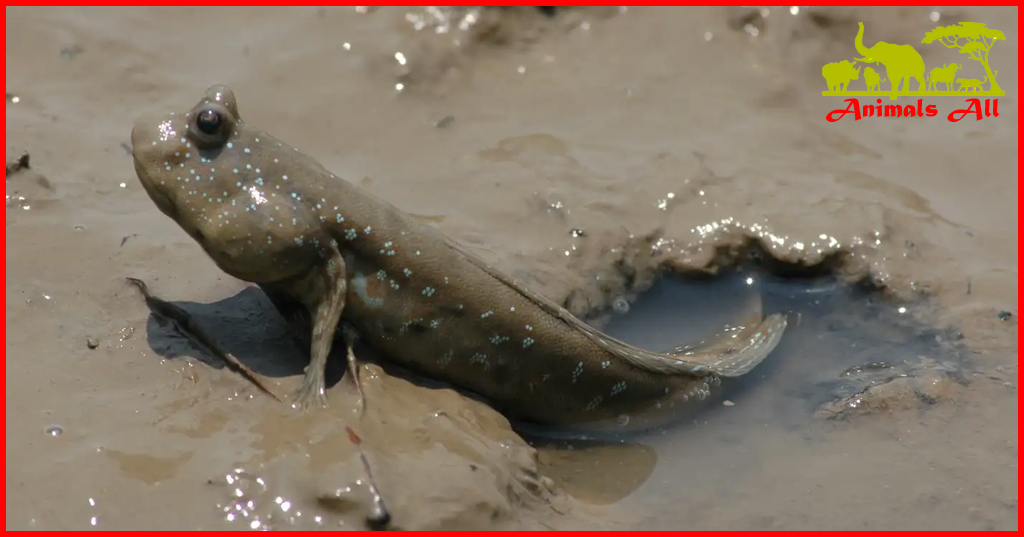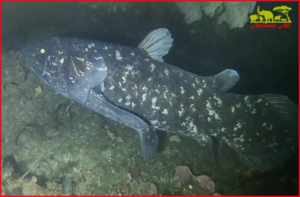
What are some unusual and exotic fish?
Hello friends, If you want to know more about fish farming anf fish skills and knowledge, you can read this article. I this article you can get a best information about exotic fish.
Four-eyed fish
Reason for the list: You have never seen a fish that likes to stick its head out

This small fish, which lives in the rivers of Central and South America, has very peculiar eyes, which look like frog eyes and protrude high above the head. The structure is very peculiar. The middle of each eye is divided into two equal parts from front to back by a black horizontal line, and the pupil and lens are also divided into two parts, which looks like four eyes, so it is called four-eyed fish . But in fact, it only has two eyes, but there is a special curtain-like organ in the eye, which allows its eyes to observe activities above and below the water at the same time. The whole field is about 20cm, and it lives in tropical (24~28 degrees Celsius) fresh water.
Ancient Butterfly
Reason for being on the list: Your fish flew out…

This fish is native to West Africa and is a freshwater fish that is kept in water temperatures (24-28 degrees Celsius). It is usually 8-12 cm long, with a long, stout, and slightly flattened body. The head is large and has no lower operculum. The eyes are medium-sized. Strictly speaking, its appearance is not eye-catching, let alone stunning. The unique thing about this fish is that it can fly. The strong tail allows them to jump out of the water, and the well-developed wing-like pectoral fins allow them to glide on the water surface, just like a bird. When encountering prey insects, they can jump out of the water and glide for a short distance to catch them.
Swallow fish
Reason for being on the list: It is possible that it flew away with the one upstairs in your fish tank.

The swallowfish, scientifically known as the hatchetfish, is distributed in freshwater basins from Panama to western Colombia . It can reach a length of 6.4 cm and inhabits the mid-bottom waters. It is carnivorous. Compared with the incompletely developed pelvic fins, the pectoral fins are larger and wing-shaped. There are strong muscles next to the pectoral fins, which enable the pectoral fins to paddle vigorously, like wings, and can swim at high speeds and even jump out of the water. It is easy to raise and will accept live bait or feed. However, it is slightly territorial and easily conflicts with fish of similar size. It is easy to jump out of the fish tank if it is not covered.
Carcharodon longjaw (small dolphin)
Reason for being on the list: Do you know what is the smartest fish that can be legally kept?

OK, you will definitely be disappointed when you see this fish for the first time, but I don’t know why it ranks fourth. Not only does it look ugly, but it is also not worth watching. It is so ugly… But! But! Do you know that it has another name, freshwater dolphin? This fish will interact with its owner, and some owners even prepare toys for it in the fish tank! It is not a problem to raise fish like cats and dogs. The problem is whether the fish you raise is smart enough? (Where did it say that fish only have a memory of 7 seconds?)
Piranha
Reason for being on the list: Yes, you still recognize it even if the name is changed

Piranhas, also known as piranhas , live in the Oriroco River and Amazon River basins in South America. They have a thick and fat body, wide jaws, and teeth like razors that can be clasped together. Most owners may raise this fish out of curiosity. The ornamental value is just average, and the breeding also requires strict filtering strength and food. There are currently no laws or regulations that explicitly prohibit the sale and breeding of this fish. Some cities have local regulations that may impose penalties on piranhas that have not been destroyed once they are found.
Rope Dinosaur Fish
Reason for the list: This is probably the fish that looks most like a snake besides the eel.

The grass rope dinosaur fish is an ancient fish, known as a living fossil in the aquarium. Compared with other dinosaur fish, the grass rope dinosaur fish is more slender, up to 90 cm long, and looks like a snake or loach, but looks much thinner, and lacks pelvic fins. Its body color is generally between olive green and brown. Carnivorous fish have a strong ability to accept feed. When feeding the grass rope dinosaur fish, you can use granular feed. Of course, if conditions permit, it is best to prepare some live feed for the grass rope, such as brine shrimp and bloodworms .
Devil knife fish
Reason for being on the list: The swimming posture and living habits of this fish are different from most fish

It is native to the central part of Brazil and the Guyana River in South America. This fish is black and dull. It has a streamlined head, a wide chest that becomes thinner towards the tail, and becomes a black and white stick at the tail. The pelvic fins are very developed and swim in a wavy shape, like a black feather. This fish has no dorsal fin, and there is a distinct yellow line on its bare back. The whole fish looks like a knife. It has a big mouth and small eyes. The mouth can open to 90 degrees, but the eyes have degenerated and can hardly see anything. It relies entirely on the weak electric current emitted from its body to take in food and avoid obstacles. Its swimming posture is graceful and unpredictable. It can swim forward, backward, vertically, and on its back with ease. That is mostly active at night, and sometimes lies flat on the bottom of the water during the day. It may attack the eyes of other small fish.
Dead Leaf Fish
Reason for the list: You may not even notice the fish under your nose

A kind of fish that you can’t find hanging on a branch. It has a very strong camouflage. Put some driftwood and dead leaves in the fish tank, put in black water and raise two dead leaf fish, then you won’t be able to find any fish in it at all. This is a fish that moves very quickly and has super fast predation ability. As long as it finds a small fish in its prey range, it will suddenly open its mouth and swallow it. It seems that animals that rely on camouflage to eat have amazing explosive power.
Glass Catfish
Reason for being on the list: Like the one above, this kind of fish is hard to find when the lights are turned off

The name of the glass catfish comes from its transparent body and two long tentacles like cat whiskers growing in its mouth. It is 10 to 12 cm long and has two long tentacles, which often extend forward or rotate freely to detect water flow, enemy situation, obstacles and help foraging. The whole body is transparent, and the spine, spines, fins and internal organs are clearly visible. The color is light green like jade, just like a high-end jade carving handicraft. The suitable water temperature is 22 to 28℃. It has strict requirements on water quality and water temperature. That is timid and afraid of loneliness. It is easy to die when alone.
Archerfish
Reason for being on the list: This is a fish that your cat might be afraid of (>^ω^<)

The fish species that can use their mouths as water cannons. Archerfish is a soda fish. When raising it, a little sea salt should be added to the water to maintain its lifespan. It is basically impossible to live long in pure fresh water. Once there is a prey, it will sneak up to the target, aim first, and then spray a stream of water from its mouth to knock the insect into the water. It can shoot water up to two or three meters high, and it is difficult for moths within 30 centimeters to escape. It can not only knock down small insects such as flies, bees, and butterflies, but also injure people’s eyes.
Anti-swimming catfish
Reason for being on the list: Don’t flush the toilet…I’m still alive

It is native to Lake Tanganyika, Lake Victoria , Lake Malawi, Lake Nigeria, Lake Niger and the Sai River system in Africa. It is generally 5-6 cm long and can grow up to 15 cm. That usually swims with its belly facing upwards, whether it is moving or still. It is named the reverse swimming catfish, probably because it is different from other fishes and does the opposite. That is particularly good at backstroke, and it swims fast and has a strange posture. It is an omnivorous fish that can eat algae, aquatic plants, small fish and shrimps, insects, fresh live bait, and artificial feed.
Mudskipper
Reason for being on the list: We are also fish, we don’t want to stay in the water

This is a fish that likes to go out and visit friends after getting its body wet. Mudskippers like to run around in the hot sun. Because they have gills, they are real fish, a kind of ancient amphibian with a low degree of evolution. Their body structure changes very little, and they must immerse their bodies in water regularly. It is not enough to just hold saliva in the mouth to absorb oxygen. Mudskippers must always keep their bodies wet to prevent dangerous dehydration, so all their activities are carried out around the pond. But mudskippers can jump. If they jump out of your fish tank and can’t find another water source, you may be able to collect dried fish the next morning. This little guy is easier to keep, but be sure to add some salt to the water to prolong its life. Most of them are soda fish.

